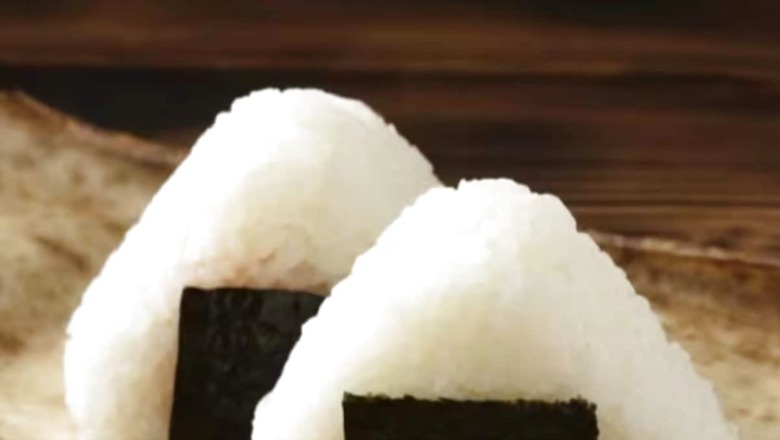
views
Japanese cuisine, be it the humble store-bought ramen or ceremonial grade matcha, is popular worldwide. Now, another Japanese staple is gaining global popularity. This dish is onigiri, which simply translates to “rice ball”. As its name suggests, onigiri is a rice ball stuffed with a number of fillings like meat or seafood. This rice ball is then covered in nori, which is dried edible seaweed. Onigiri is made in a simple circular shape, a triangular shape, or cylindrical shape. Some of its popular fillings are salted salmon, chicken, Japanese pickled plums and kelp.
Initially, onigiri was made to reuse leftover rice but it quickly developed into a regular meal of its own. Many Japanese convenience stores offer an array of onigiri that are targeted at students and busy office workers who need a simple but comforting snack. Onigiri can be eaten just with hands while on the go, which is part of its appeal. However, now onigiri is getting fancy treatment as high-end restaurants are putting it on the menu.
The basic ingredients needed to make onigiri are rice, salt, seaweed and filling of one’s choice. It is a highly customisable and affordable snack. Many people confuse this dish with sushi but both are different as sushi is made of vinegar-flavoured cold rice, unlike the plain or mildly salted rice of onigiri.
In December 2023, The Japan News listed numbers by a family income and expenditure survey by the Internal Affairs and Communications Ministry, which showed that “expenditures on onigiri and other food items using rice for households of two or more people” was a record high of 5,172 Japanese Yen (approximately Rs 2,600) in 2022. After the pandemic, Japan saw a number of specialised onigiri shops such as “Nori musubi” in Kyoto and “Zojirushi ginpaku onigiri” in Osaka.
One geo-political reason that contributed to the popularity of onigiri and other rice-based dishes is the Russian invasion of Ukraine in February 2022. This world event increased the price of flour in many countries, while the price of Japanese rice stayed stable.
The Japanese government has also been trying to promote Japanese rice overseas. A ministry official told The Japan News, “Until now, rice has only been used to make sushi, but the recent onigiri boom has opened up opportunities to develop the rice market. In the future, we would like to expand the export of rice not only to North America and Asia, where it has been very popular, but also to the Middle East and Africa.”




















Comments
0 comment